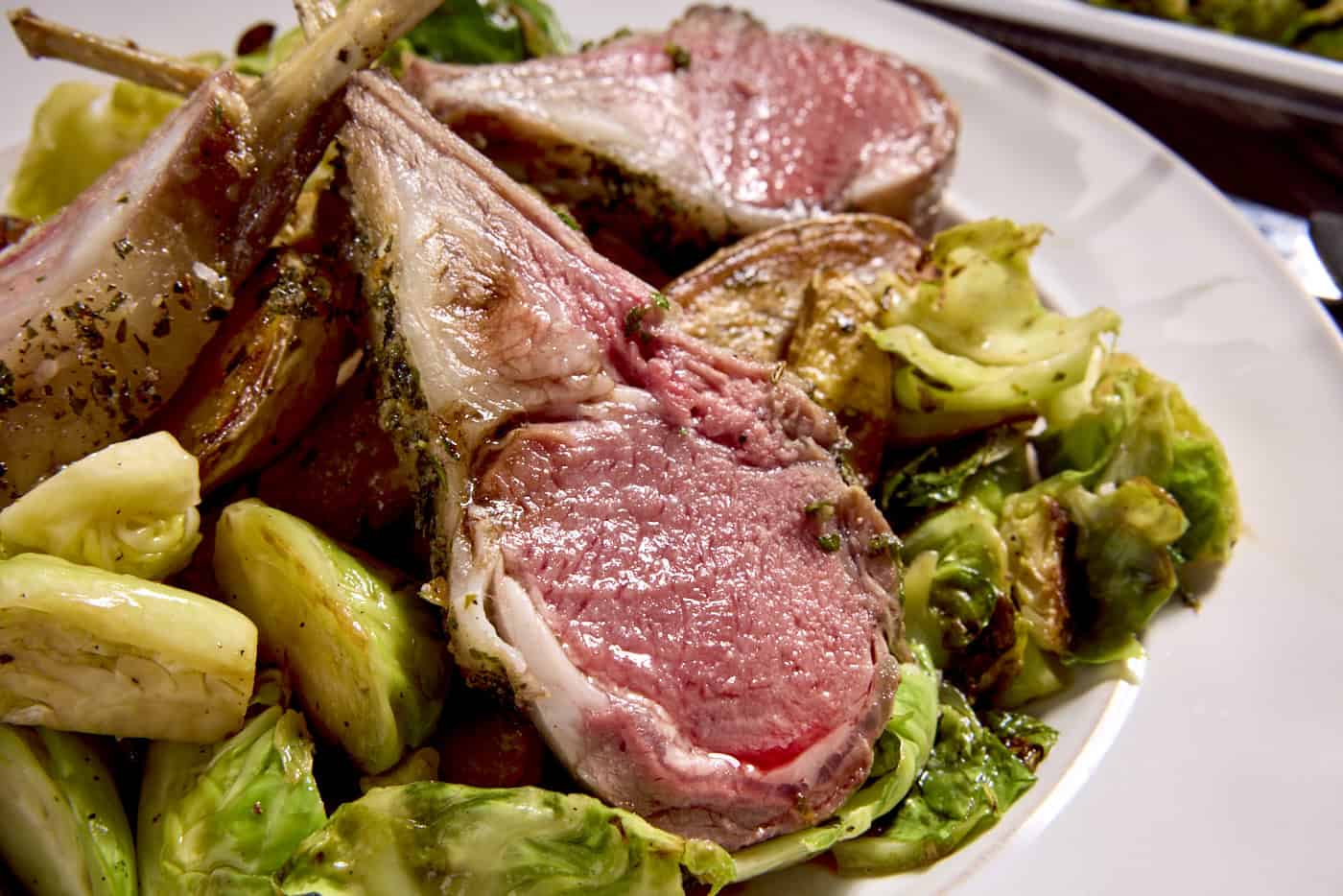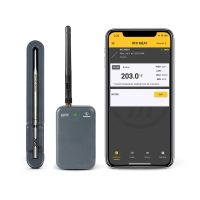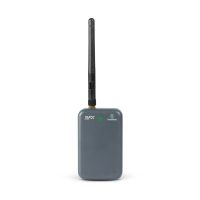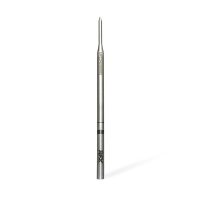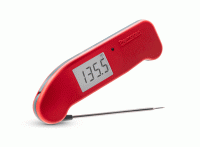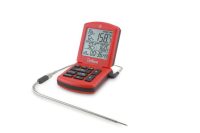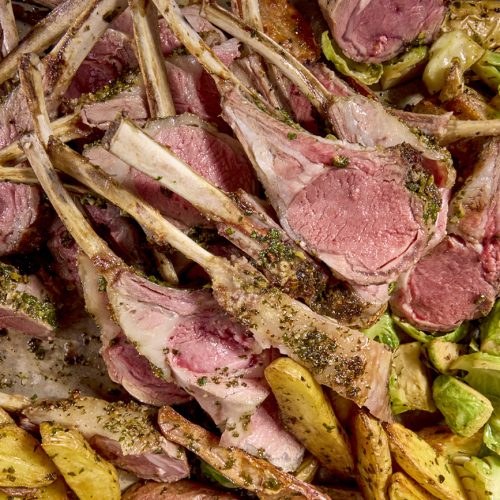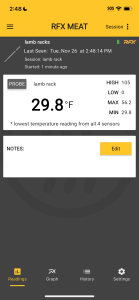How to Roast a Rack of Lamb: Thermometry for Perfect Doneness
For an elegant, traditional, and impressive holiday meal, it’s hard to beat a perfectly roasted rack of lamb. Lamb is a beautiful and delicious meal, especially when it’s cooked properly, and we have the tips and tools you need to cook it properly. Read on to learn how to get perfect lamb racks for your holiday feast!
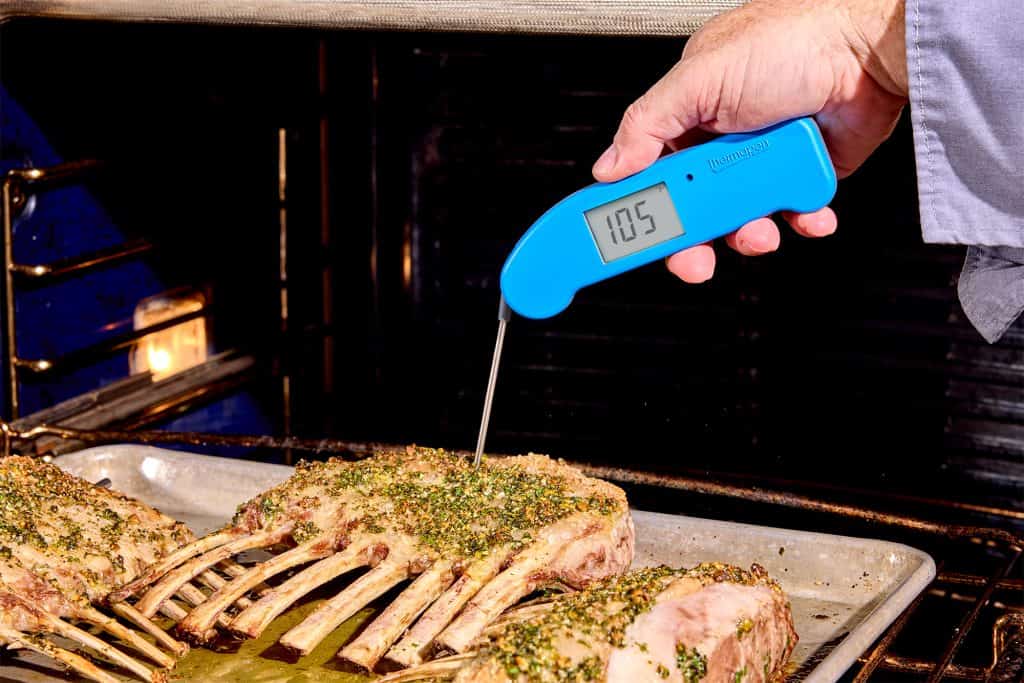
Get the tools you need for this cook here:
Why cook rack of lamb
Lamb signifies to the mind and palate both elegance and rural tradition, all in the same bite. It is the province of both the black-tie restaurant and the humble stone hearth and thus is appropriate for any dinner where grace and comfort are the primary aims. Plus it’s straight-up delicious. Lamb has a deeper, warmer flavor than beef that comes as a welcome change, especially around holidays that are usually beef-centric.
Rack of lamb is easily found around holidays at butcher shops, meat departments, and large discount-club stores. Source it at one of those and it’s also not particularly expensive. (That’s all relative, of course. It costs more than a rotisserie chicken, but compared to a plate of lamb shops at a restaurant, you’re coming out at a fraction of the price.)
And finally, a rack of lamb doesn’t take very long to cook. You can prep all of your side dishes, make your sauces, bake some fresh rolls, then toss the racks in the oven about a half hour before everything goes to table. It’s a perfect way to destress your holiday dinner party while also elevating its content.
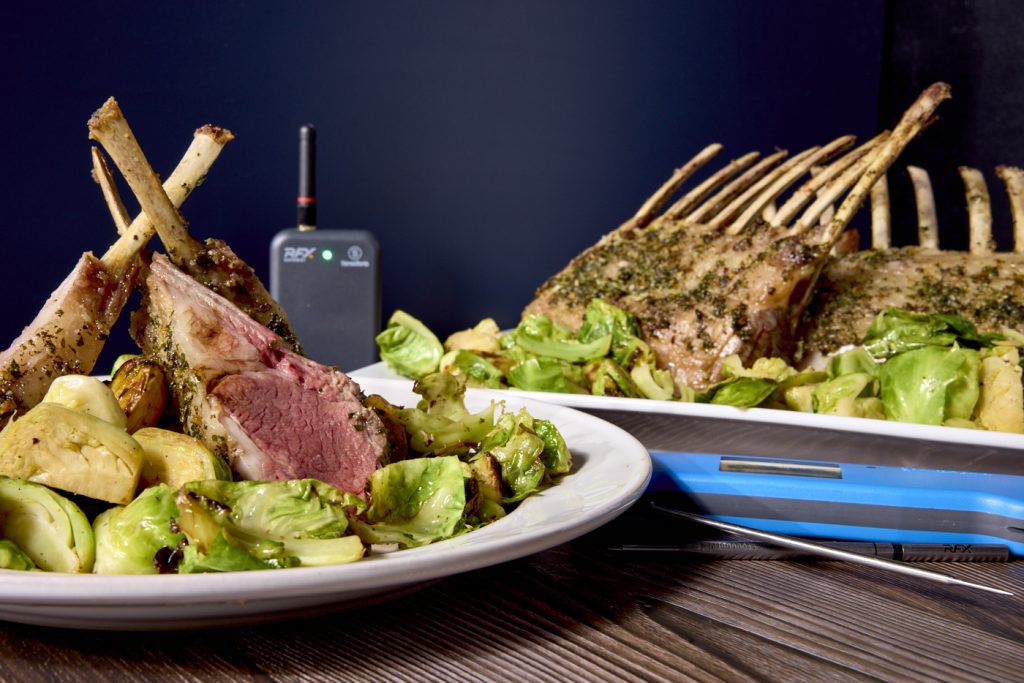
But I don’t like the flavor of lamby lamb
If you don’t like the “lambiness” that is associated with this delicious meat, look into how you’re sourcing it. American-raised lamb tends to be milder than Australian or New-Zealand lamb, so seek that out. In fact, if you can find a local lamb producer, you can almost certainly get particularly mild-tasting breeds. Sheep that are raised primarily for wool tend to be more strongly-flavored than those that are raised primarily for meat. As your local sheep supplier if it’s a wool or meat breed and you buy accordingly. You may find you like lamb a lot more than you thought!
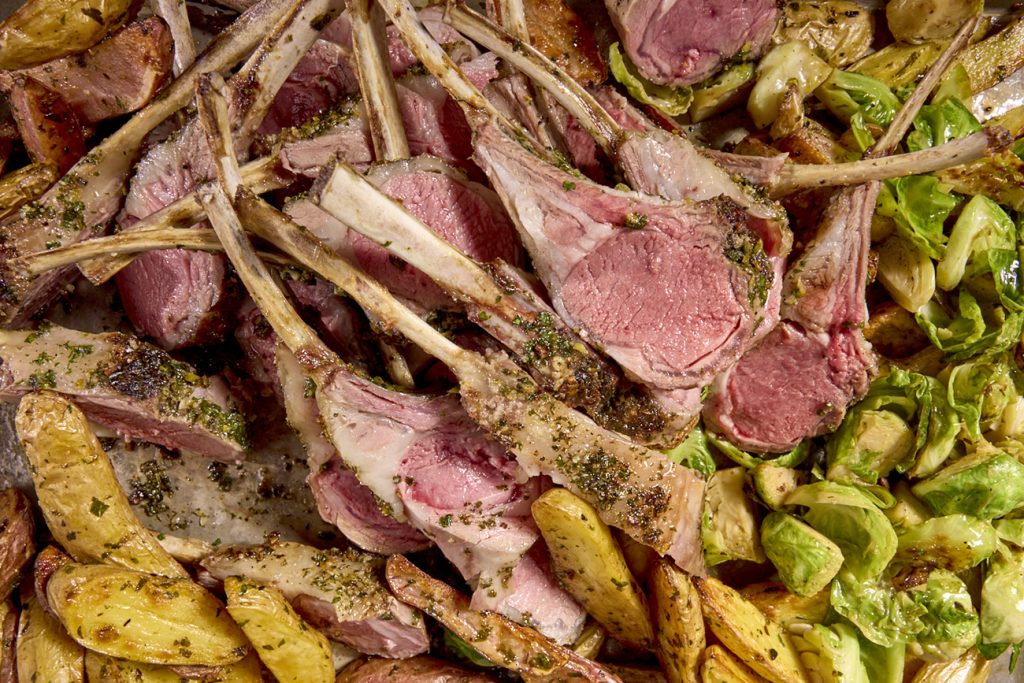
Once you have your racks of lamb, you can further de-lambinate them by trimming them more aggressively. Much of the flavor that people find objectionable in lamb resides in the fat, so if you trim the meat more closely, you’ll end up with less of that flavor.
Of course, if you don’t mind that bit of gamey-lambiness, none of this is a problem! I don’t personally mind the flavor, and in fact welcome it, so we don’t trim the racks closely here. Buy, trim, and cook it to your liking.
Making lamb perfectly: thermal considerations
The muscle we eat on a rack of lamb is anatomically the same muscle as a prime rig on a cow. So it makes sense that we’re looking for a perfect, edge-to-edge medium rare, just like we look for in that cut. But where a prime rib roast is huge and must be cooked slowly to prevent an overcooked gray band in the meat, lamb rib loin is small and can be cooked at a higher temp without overcooking the outer edges.
We roast our lamb racks at 425°F (218°C), and monitor the internal temperature with a leave-in probe thermometer like RFX MEAT or ChefAlarm. With RFX MEAT, we also use our RFX GATEWAY and the free ThermoWorks App, but either way, we set our high-temperature alarm for 105°F (41°C). Yep, you read that right, and yes, that is a very low temperature. But because we’re cooking it at such a high temperature, we get quite a bit of carryover cooking. How much? We got a full 25°F (14°C) of carryover! So we actually landed right where we wanted to be at 130°F (54°C), which was a perfect, juicy, pink medium rare.
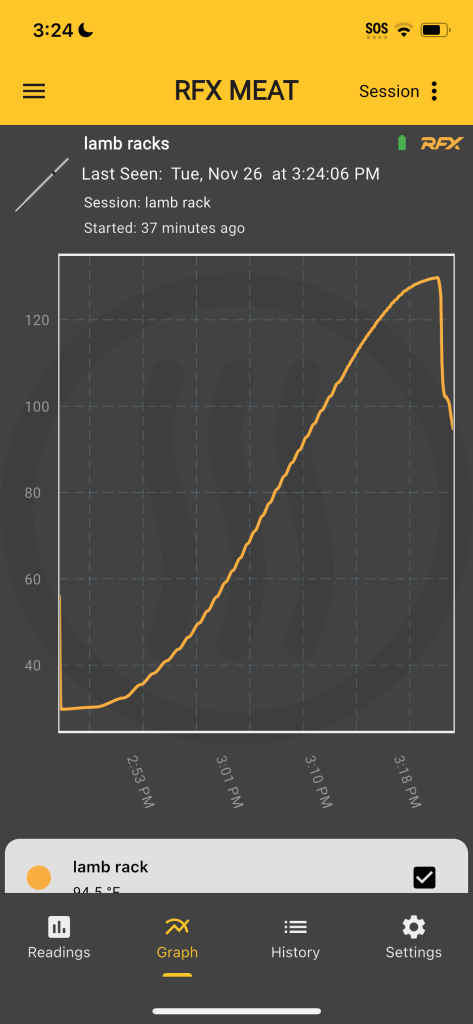
In the graph above, you can see that our temperature slowed to a near stop right at about 130°F (54°C), despite us taking it out of the oven at 105°F (41°C). Using RFX MEAT allows you to visually track carryover cooking like this very easily. The common and pervasive idea is that a small piece of meat like this could expect 5–10°F (about 3–6°C) of carryover cooking. But if we had pulled our lamb at 120°F, we would have landed solidly in medium-well territory by the time the carryover was finished. Not wanting to undercook, we verified that we had no lower temps in the lamb rack by verifying what RFX MEAT was telling us with Thermapen ONE.
Why not cook it at a lower temperature for less carryover?
You could cook your lamb rack at a lower, slower temperature—say, 225°F (107°C)—and move your pull temp closer to your target temp, but we don’t see much reason to do so. Plan on more carryover, and get dinner on the table faster! Also in the graph above you can see that our entire cook cycle, from probe insertion to removal as only 37 minutes—and that included the resting period for carryover cooking! That kind of speed is one of the (several) glories of a rack of lamb.
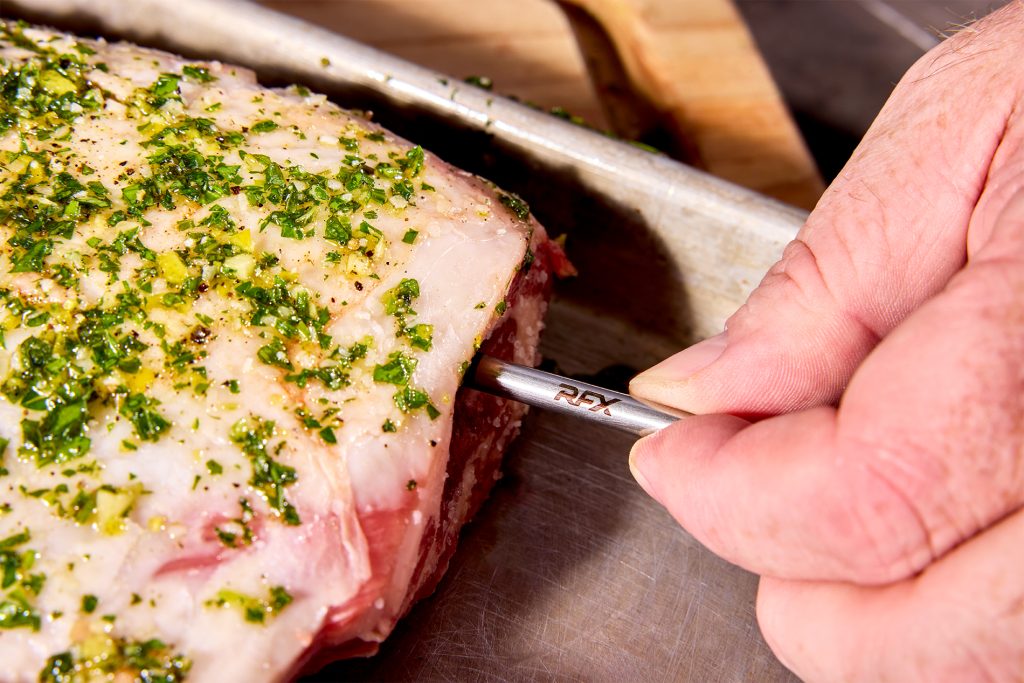
Seasoning your rack of lamb
Lamb is friendly with most of the world’s cuisines, so you can flavor it with just about any flavor palate that you like. But we love it nicely salted with a paste of tasty herbs—parsley, some mint, lemon zest, garlic, black pepper—applied to the surface before roasting.
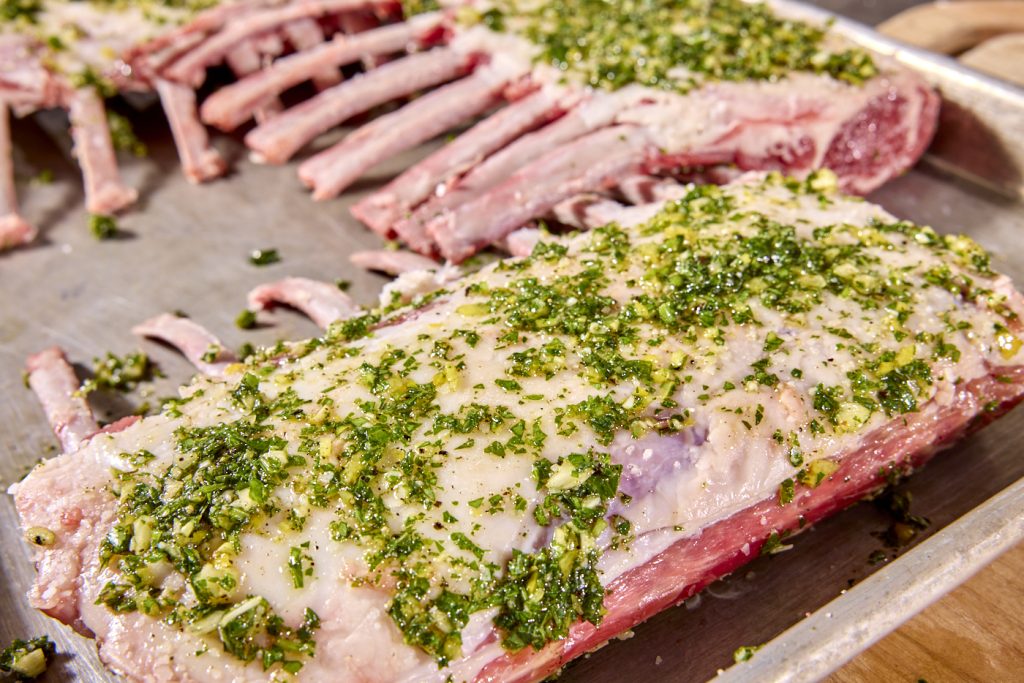
Conclusion: show your love with food
We hope you give this method a try. for one of your upcoming gatherings. We think you’ll find it to be a phenomenal way to show your guests not only your prodigious culinary skills, but also your love and gratitude for them. You don’t just give food this good to people you don’t care about, and that will be evident in the tasting. Use a leave-in probe thermometer like RFX MEAT to track the temperature throughout the cook, pull the meat from the oven early enough to account for the carryover cooking it will undergo (check it with Thermpeane ONE to be sure you hit the thermal center), and give it time for the carryover cooking to run its course. Then serve it to your loved ones with pride, and dig in.
Happy cooking.
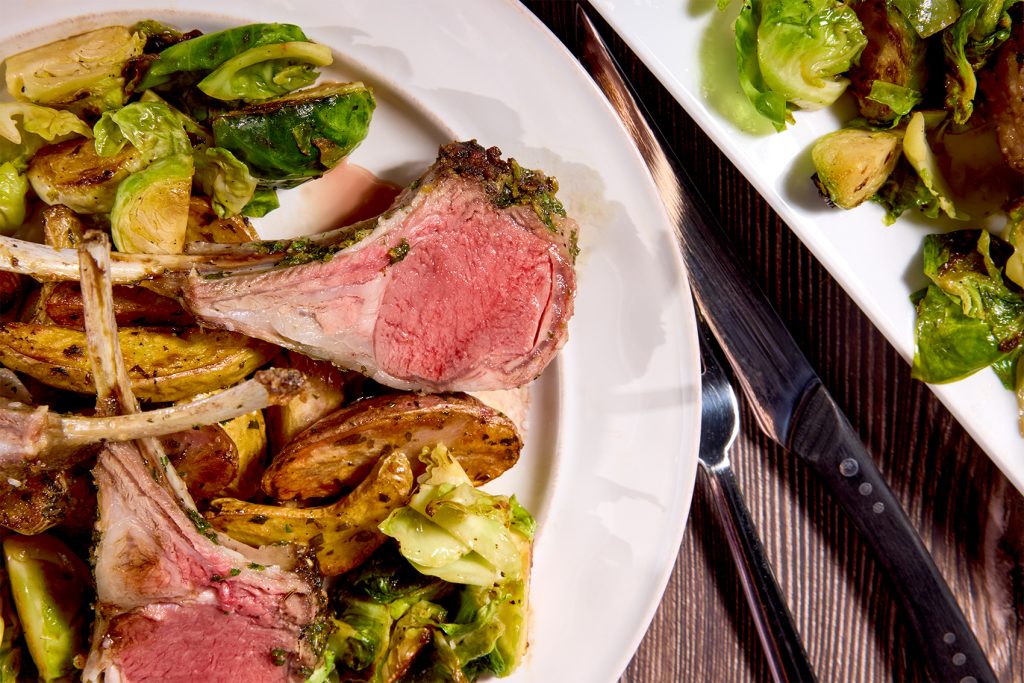
Roast Rack of Lamb
Ingredients
- 1 rack lamb 1 rack feeds 3-5 people, depending on appetite and sides available
- kosher salt
- 2 Tbsp fresh parsley, minced
- 1 Tbsp fresh mint, minced
- 2 strips lemon zest, minced
- 1 clove garlic, minced
- 1/2 tsp freshly ground black pepper
- 2-3 Tbsp olive oil
Instructions
- Preheat your oven to 425°F (218°C).
- Trim your lamb to your liking. This can include Frenching the bones or not. Salt the meat and the fat well with kosher salt.
- Mince together the herbs, garlic, and strips of lemon zest. Combine them in a bow with the black pepper and the olive oil. Apply liberally to the meat, but don't try to cake it on too thick.
- Insert your RFX MEAT probe up to the recommended immersion depth line into the meat. Put the rack of lamb on a baking sheet, fat-side up, adn place it in the preheated oven.
- Set the high-temp alarm in your ThermoWorks App to 105°F (41°C) and cook.
- When the high-temp alarm sounds after about 20–25 minutes, verify the temperature with your Thermapen ONE and remove the pan from the oven.
- Allow the meat to rest and continue its carryover cooking, which should be about 25°F. When the temperature curve flattens out in the app, you'll know the carryover has stopped.
- Serve the racks cut up into chops, carving at the table if you like. Enjoy!


